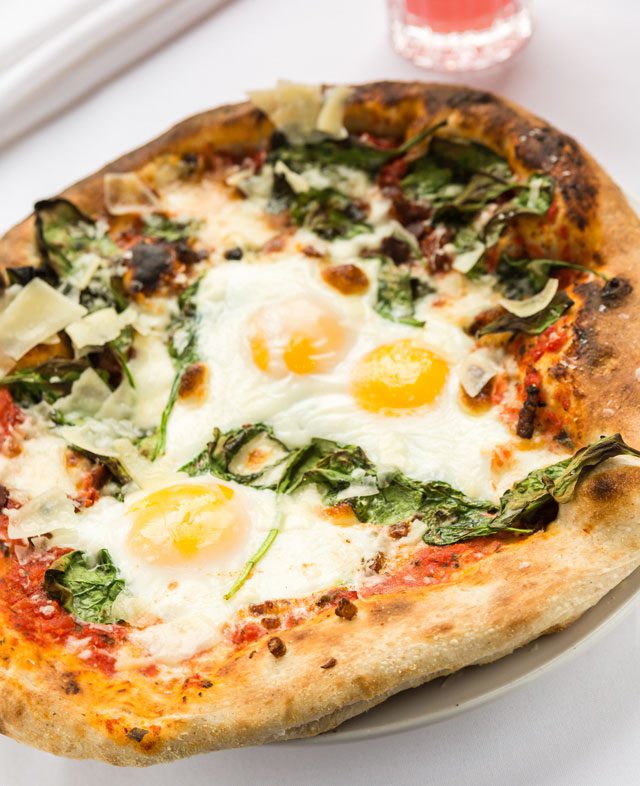
[dropcap]With[/dropcap] Ringling Bros. gone, death-defying acts, primal drama and children with wide eyes asparkle seem dated. But that excitement can be recaptured in an unlikely place – with excellent food. Just open a tall glass door to Amelia’s Wood Fired Cuisine in Tulsa’s Brady district. You see tasteful red leather banquettes, crisp white tablecloths and brick-and-wood paneled walls soaring to a high ceiling. “Much too tame and civilized,” you think when a director’s muse – waifish, impossibly elegant and ethereally graced – welcomes you. But here she’s the director (and eponymous owner), Amelia Eesley.
She would be happy to seat you where suave waiters stand at the ready, but ask for the chef’s counter instead.
She leads you past big bronze urns, potted plants and a long bar where patrons drink or dine on the wide counter, back, past more tables – except the dining room now includes the kitchen, and those tables abut counters with cooks prepping vegetables and sauces. But you don’t notice all that because you focus on a huge wall of yellow brick, steel racks, blazing coals and raging fire. It’s like the gates of Hell.
This so-called Argentine grill is made by a small Michigan company started by a former Time correspondent in Buenos Aires who, returning stateside, found that the flavor of grilled Argentine meats was nowhere to be found. In the past few years, the Argentine grill has been discovered. Some top chefs – Jose Andres, Tom Colicchio – use them because of the challenge and excitement. You don’t set a control for 350 degrees and a timer for five minutes. You use instinct and feel, talents honed by practice.
“We use white oak from Keystone,” says master chef Kevin Snell, who, like Eesley, is a Stonehorse Grill alum. “Every piece of wood is different. The grill has hot spots, cold spots; you have to know them all.”
Snell points to the huge metal wheels and chains, which “let us raise and lower the grill toward the fire or the coals, giving us perfect control. The possibilites are endless.”

The Argentine is versatile: an open grill; a chapa (a flat griddle) for searing or making a caramelized crust; a fiery oven for bread and pizza; and a smoker for house-made sausages and hams.
“We bought a half pig from 413 Farms in Adair. We cooked each section a different way,” Snell says. “I love those farms. They let the pigs roam free. I took the entire staff there to see where our pigs and chickens come from.”
The flames leap and you notice the intense heat. Step back to the chef’s counter. Have a look at the menu. Francis Mallmann’s best-seller about the Argentine grill, Seven Fires, details its different ways of cooking. Six of those seven are on the menu. (Snell hasn’t used Infiernillo, cooking between two fires, but he will.) The first of Mallmann’s seven fires is Parilla, a cast-iron grate; from it comes a pork chop with blackberry hibiscus sauce with homemade andouille sausage. Smoke and fire flavor this dish. Chapa is for the rainbow trout. Horno de barro is the wood-fired oven for the crusty sourdough bread. Rescoldo is for vegetables cooked while buried under hot ashes and served with roasted brie. In Asador, Snell cooks whole animals, like the pig. Caldero is a large cast-iron Dutch oven for a delicious pork belly and beans casserole.
All these fires, Eesley says, “add incredible flavor. Cooking by fire is primal.”
That’s the drama. It’s dangerous, a bit chancy, like a lion tamer. Chefs work by instinct with balletic grace. Each perfectly seared steak is a victory.
“We serve not just dinner but entertainment as well,” says Eesley, who spent four years in New York at drama school.
Snell adds, “When people see us work, they gain respect for what we do.”























